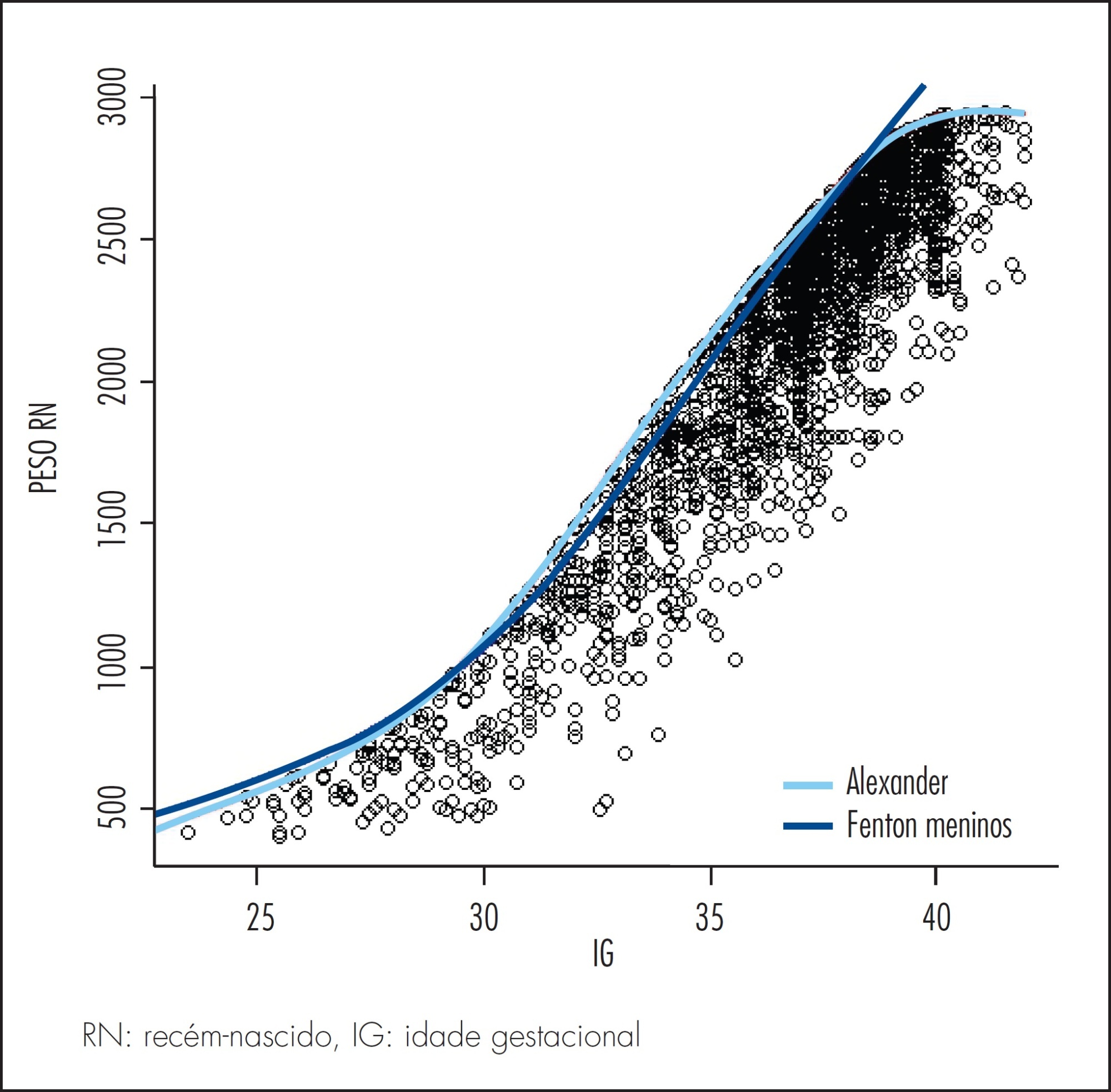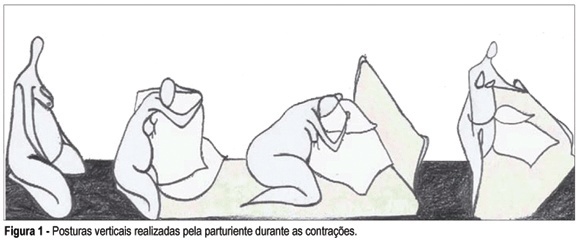You searched for:"Roberto Eduardo Bittar"
We found (20) results for your search.Summary
Rev Bras Ginecol Obstet. 2015;37(2):59-63
DOI 10.1590/SO100-720320140005180
It was to compare the use of two growth curves for the diagnosis of small-for-gestational-age (SGA) infants, having the 10thpercentile as reference.
In a retrospective study, data of 20,567 singleton live births from January 2003 to June 2014 were analyzed, and divided according to gestational age: (a) 23 to 26, (b) 26 to 29, (c) 29 to 32, (d) 32 to 35, (e) 35 to 38, (f) 38 to 41 and (g) >41 weeks. Data were paired and analyzed using the McNemar test, with the level of significance set at 0.05.
The curve designed by Alexander indicated a higher percentage of diagnosis of SGA than the curve constructed by Fenton for every category of gestational age up to 41 weeks, more markedly in the 32-35 week group (18.5%). Between 37 and 40 weeks of gestational age, Alexander's curve exceeded Fenton's curve in 9.1% of the cases in the diagnosis of SGA.
The Fenton curve provides a more accurate evaluation of an infant's growth since it is gender-specific and allows measurement of three parameters. It has also been constructed with newer data and more sophisticated statistical tools.

Summary
Rev Bras Ginecol Obstet. 2004;26(8):655--6662
DOI 10.1590/S0100-72032004000800010
OBJECTIVE: to characterize the features of pregnant women who had elective preterm delivery, and correlate clinical and obstetrical diagnosis with neonatal results. METHOD: A total of 100 pregnant women admitted in the Obstetric Clinic ward and their respective newborns has been evaluated. The inclusion criteria were: single pregnancy, confirmed gestational age by an early scan, absence of labor symptoms and the presence of a maternal or fetal condition leading to preterm delivery indication. The direct causes of elective preterm delivery were classified in groups, to relate them to the neonatal results, taking into account the gestational age. To assess the neonatal results, the following criteria were analyzed: acidosis; 1st and 5st minute Apgar score lower than 7; intracranial hemorrhage; neonatal death; sepsis and respiratory distress syndrome. Statistical analysis used to correlate the causes of delivery and the gestational age to the neonatal results was done by log-linear models. RESULTS: One patient was excluded from the study due to fetal malformation. The most common direct causes of delivery were prenatal fetal distress (49.5%), hypertensive syndromes (21.2%), intra uterine growth restriction (13.1%) and others (16.2%). Among the main neonatal complications there were asphyxia (33.3%), acidosis (30.4%), respiratory distress syndrome (RDS) (26.3%), sepsis (22.2%), intracranial hemorrhage (21.2%) and neonatal death (13.1%). The cause of delivery was associated with acidosis and RDS by log-linear models and the gestational age was associated with RDS, 1st minute Apgar <7, sepsis, intracranial hemorrhage and neonatal death. CONCLUSIONS: the cause of delivery influences the neonatal results. Nevertheless, the most severe complications are directly dependent on the gestational age of delivery. Therefore, the prenatal diagnosis should be rigorously evaluated by the obstetrician, so that the decision to interrupt the pregnancy could be taken at the suitable moment, thus avoiding neonatal complications.
Summary
Rev Bras Ginecol Obstet. 2006;28(11):671-679
DOI 10.1590/S0100-72032006001100007
PURPOSE: to investigate the influence of the maternal mobility during the active phase of labor. METHODS: a prospective clinical trial was conducted through comparative analysis among a treatment group (n=50) and a control group (n=50), in the Obstetric Center of the Hospital Universitário da Universidade de São Paulo (USP). The inclusion criteria were: primigravidae with a single fetus on cephalic presentation, with 37 to 42 weeks of pregnancy, with two uterine contractions every ten minutes and with cervical dilatation until 4 cm, besides the agreement to sign the free and informed consent term. The evolution of labor for cesarean section was the exclusion criteria. The patients were assisted during the active phase of labor by the physiotherapist and encouraged for staying in vertical position and movement, according to each dilatation stage and fetus head progression. The control group had obstetric support without the presence of the physiotherapist; it was selected retrospectively, according to the same inclusion and exclusion criteria. RESULTS: 58 primigravidae between 15 and 37 years old were accompanied; 50 of them (86.2%) evolved to vaginal birth and eight (13.7%) evolved to cesarean section and were excluded. Among the patients who were accompanied, the mean of active phase was five hours and 16 minutes, while in the control group it was eight hours and 28 minutes (p<0.001). This difference was maintained in relation to the amniotic sac either whole or ragged. As for the cervix uterine evanescence, the treatment group showed a smaller period of active phase in association to a thin uterine cervix (p<0.001). In the treatment group, none of the patients used analgesics during the active phase, against 62% of the control group (p<0.001). In this group, all the patients used some kind of anesthesia for delivery; in the treatment group, among those who used anesthesia, 76% did it while the dilatation was 9 or 10 cm and 12% did not use any kind of anesthesia (p<0.05). The average weight of the newborns and the apgar did not show significant difference rates between the two groups. CONCLUSIONS: the good performance of maternal mobility has positive influences on the labor process: it increases the tolerance to pain, avoids the use of drugs during labor, improves the evolution of dilatation and reduces the duration of the active phase.

Summary
Rev Bras Ginecol Obstet. 2008;30(2):87-92
DOI 10.1590/S0100-72032008000200007
PURPOSE: to test a therapeutic approach using atosiban for tocolysis, evaluating its safety and maternal and fetal side effects. METHODS: prospective study with 80 pregnant women with preterm labor admitted for tocolysis. Inclusion criteria: singleton pregnancy, regular uterine activity, cervical dilatation between 1 to 3 cm, cervical enfacement greater than 50%, 23 to 33 weeks and six days of gestational age, intact membranes, amniotic fluid index between 5 and 25, no maternal, fetal or placental diseases, no fetal growth restriction, no cervical incompetence, no fever. Exclusion criteria: chorioamnionitis or fever during tocolysis. Atosiban group: women received 6.75 mg atosiban iv in bolus, 300 mcg/min for three hours, then 100 mcg/min for three hours and thirty minutes. If uterine activity persisted, it was maintained iv infusion of 100 mcg/min for 12.5 hand that so for as long as 45 hours. Control group: women received terbutaline (five ampoules, 500 mL crystalloid solution) iv infusion, 20 mL/h. If uterine activity persisted, infusion velocity was raised (20 mL/h) until uterine contractions were absent. The dose was maintained for 24 hours. RESULTS: gestational age at birth was 29 weeks and five days to 40 weeks and six days. In atosiban group, the proportion of women who had not delivered at 48 hours was 97.5%, mean interval between tocolysis and birth of 28.2 days. In control group, birth occurred before 48 hours in 22.5% of the cases; mean interval between tocolysis and birth of 5.3 days. Maternal side effects were observed in 27.5% of cases of the atosiban group, none with tachycardia, dyspnea or tachypnea. In the control group, 75% of the cases referred palpitations, tachycardia, tachypnea or headache (drug infusion was interrupted in four cases). Fetal tachycardia was observed in 22.5% of the cases (n=9). No early neonatal death was observed. CONCLUSIONS: the therapeutic approach used showed to be effective for tocolysis, with low incidence of maternal, fetal and neonatal side effects.